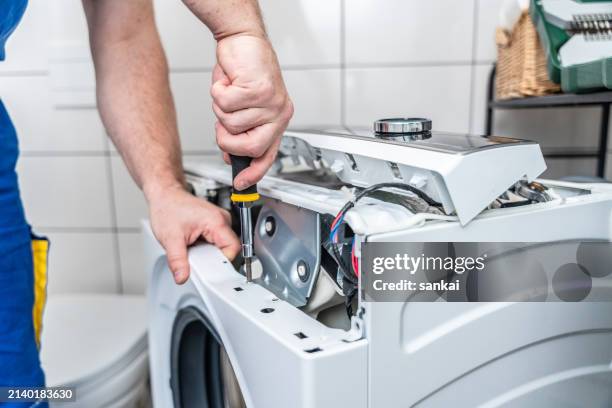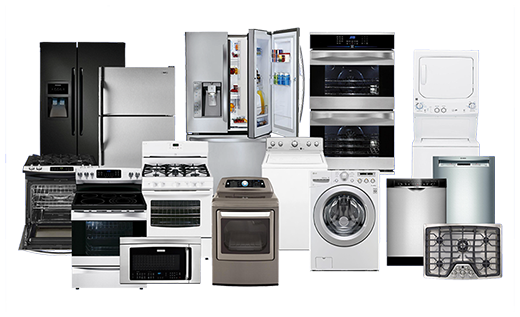OEM vs. Aftermarket – Dependable Refrigeration & Appliance Repair Service Washing Machine Repair
OEM vs. Aftermarket – Dependable Refrigeration & Appliance Repair Service Washing Machine Repair
Blog Article
The Ultimate Guide to Recognizing Appliance Repair Work at Home
When your fridge quits cooling or your stove refuses to warm, it can really feel overwhelming. Comprehending device fixing at home can save you time and cash. You'll discover to acknowledge signs and symptoms, make use of vital devices, and comply with an organized troubleshooting procedure. Before you begin, there are crucial security preventative measures you require to take right into account. What are one of the most common problems, and how can you repair them? Allow's explore the essentials.
Usual Device Troubles and Their Signs
When your devices begin acting up, it's necessary to recognize the indicators beforehand. Disregarding them can result in larger issues and pricey repair services. If your fridge isn't cooling down effectively, you may discover warm places or condensation developing. This can indicate a stopping working compressor or an obstructed vent.Your dish washer may reveal issues via dirty dishes or unusual sounds throughout cycles. If you hear grinding or clanking, it's time to investigate.A washing machine that won't spin or drain pipes can leave you with soggy washing, recommending a clogged drainpipe or a malfunctioning pump.Lastly, if your oven's temperature seems off or it takes forever to preheat, you may be taking care of a malfunctioning thermostat. By remaining alert to these symptoms, you can deal with problems prior to they intensify right into significant repair services.
Essential Devices for Appliance Fixing
When you're taking on appliance repairs at home, having the right tools is essential. Basic hand devices like screwdrivers and pliers will certainly help you take apart and deal with numerous home appliances, while electrical screening gadgets guarantee you're functioning safely with electrical wiring. Let's review what you need to get going on your fixing trip.
Basic Hand Tools
Having the right tools is important for effective device repair at home. Start with a dependable screwdriver collection, including both flathead and Phillips types, as screws prevail in device assembly. Pliers are also essential; they assist with gripping, turning, and reducing wires or little elements. A pair of needle-nose pliers can get to difficult situations conveniently. You'll require an excellent flexible wrench for tightening up or loosening nuts and bolts. An energy blade comes in handy for reducing via product packaging or insulation. Finally, don't neglect a strong workbench or surface area to securely organize your devices and parts. With these fundamental hand tools, you'll be well-prepared to tackle most appliance repair services that come your method.
Electric Screening Instruments
Along with fundamental hand tools, electrical screening tools play an important duty in device fixing. These tools aid you diagnose electrical problems and warranty appliances function safely. A multimeter is important; it measures voltage, present, and resistance, permitting you to pinpoint issues quickly. A non-contact voltage tester is an additional essential, allowing you discover live cables without making direct contact, enhancing your security. Secure meters are wonderful for determining existing flow in wires without detaching them, saving you time and initiative. In addition, circuit testers can quickly inspect if outlets are functioning correctly. By making use of these devices, you'll improve your troubleshooting process and improve your repair abilities, making home appliance upkeep a lot simpler.
Step-by-Step Overview to Diagnosing Appliance Issues
When your device acts up, it can be discouraging, but identifying the issue does not have to be overwhelming. You'll discover to identify common issues and apply effective troubleshooting strategies. Let's walk with the steps to get your device back in working order.
Typical Home Appliance Issues

Troubleshooting Techniques Explained

Fixing Significant Kitchen Appliances: A Closer Look
Have you ever asked yourself exactly how to take on usual issues with your kitchen area home appliances? Repairing major cooking area home appliances like fridges, ovens, and dishwashers can be simpler than you think. Begin by identifying the trouble-- whether it's a refrigerator not cooling or an oven that won't heat. Often, a straightforward reset or examining the source of power can solve the issue.For refrigerators, clean the condenser coils and inspect the door seals. If your oven's not heating, check the burner and thermostat. Dishwashing machines may simply need a tidy filter or a reset to get them back in action. Always disconnect the device prior to diving right into repair work to ensure your safety.Don' t forget to get in touch with the user manual for certain troubleshooting pointers connected to your model. With a little bit of patience and the right tools, you can confidently deal with appliance repair services and save cash at the same time!

Repairing Laundry Appliances: Tips and Techniques
When your washing home appliances start breaking down, it can really feel frustrating, however fixing them doesn't have to be a problem. Begin by examining the power supply. Confirm the home appliance is connected in and the electrical outlet is operating. Next, evaluate the door or cover button; a faulty button can protect against the equipment from operating.For washers, if it's not rotating, examine for unbalanced loads. Redistributing the garments might resolve the problem. If your clothes dryer isn't heating, tidy the lint filter and check the vent for blockages.Listen for uncommon sounds; they can indicate a problem. If your device is dripping, inspect the hose pipes for fractures or loose connections. Document any mistake codes shown on electronic screens, as they can lead you in identifying the problem. Get in touch with the user manual for particular fixing tips related to your design.
Security Precautions to Take During Services
Prior to you start any type of home appliance fixings, it's important to prioritize safety to avoid mishaps or injuries. First, unplug the appliance or turn off the circuit breaker to assure no power reaches it while you function. Use insulated tools to reduce the threat of electrical shock. Wear safety goggles and gloves to secure yourself from sharp edges or debris (Washer dryer repair service Dependable Refrigeration).Make specific your workspace is clean and well-lit, so you can see what you're doing. Keep youngsters and pets away from the location to avoid interruptions and prospective risks. If you're dealing with gas devices, be extra cautious; check for leaks before proceeding.Take your time, and do not rush through repairs. If you feel unsure concerning any type of step, it's better to stop briefly and research than to guess. Complying with these precautions will help produce a safer setting for your do it yourself home appliance repair job
When to Call an Expert for Help
How do you know if it's time to employ a professional for home appliance repair services? If you have actually tried fundamental troubleshooting without success, it's a clear sign. If your device still will check here not begin or shows unusual noises after resetting it, do not think twice to seek specialist help.When you discover leakages, smoke, or shedding smells, prioritize security and call a professional instantly. These problems can cause more significant damage or posture risks to your home.Also, if your device is under guarantee, speaking to a professional is typically the best path. They can ensure that fixings won't void your service warranty, conserving you money in the lengthy run.Finally, if you're unsure or uneasy with complicated repair work, it's important to leave it to the professionals. Bear in mind, dealing with challenging issues without the appropriate know-how can lead to costly mistakes. Trust a specialist when doubtful!
Regularly Asked Concerns
How Can I Protect Against Appliance Troubles in the Future?
To stop device problems in the future, you must execute routine maintenance, look for wear and tear, tidy filters, and avoid overloading. Staying proactive will certainly aid extend their life expectancy and keep them running efficiently.
What Are the Most Common DIY Home Appliance Repair Mistakes?
You may neglect security precautions, avoid troubleshooting steps, or use incorrect tools when attempting DIY home appliance fixings. Hurrying the process or ignoring supplier standards can lead to even more considerable problems and pricey blunders. Remain client and notified!
How Do I Know if a Component Needs Substitute?
You can inform if a part needs substitute by looking for uncommon noises, leaks, or inconsistent performance. If the home appliance has a hard time to run appropriately or reveals visible damages, it's most likely time for a replacement.
Can I Use Generic Parts for Appliance Services?
Yes, you can use common components for home appliance repairs, however ascertain they're suitable - Lg Dryer repair near me Dependable Refrigeration & Appliance Repair Service. Generic components may save you money, yet they can affect efficiency or longevity, so evaluate your options meticulously before making a decision
What Warranties Cover Device Repair Works?
The majority of appliance guarantees cover repair services for producing problems, yet they usually exclude damages from misuse. Inspect your warranty terms meticulously, as some might call for using licensed specialists and original parts for protection to continue to be legitimate.
Report this page